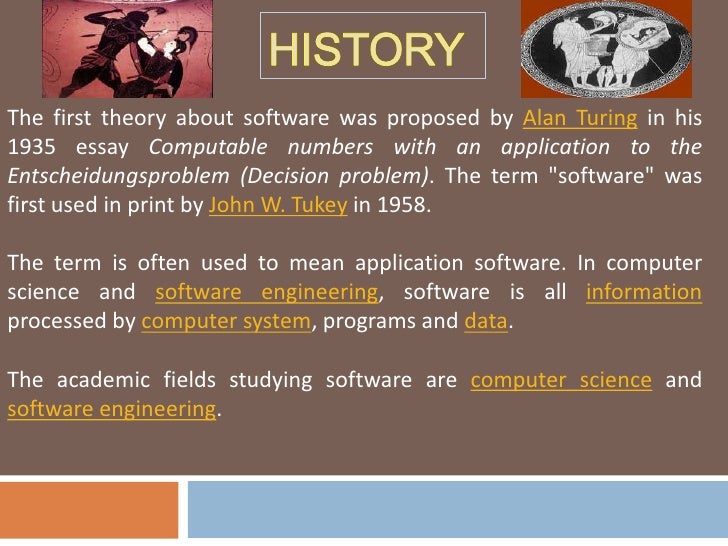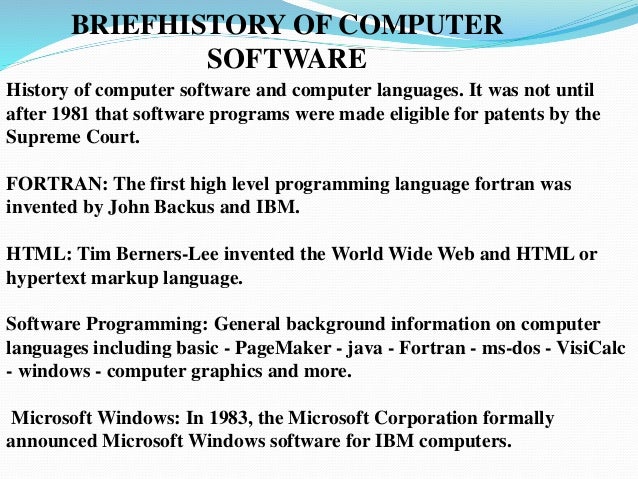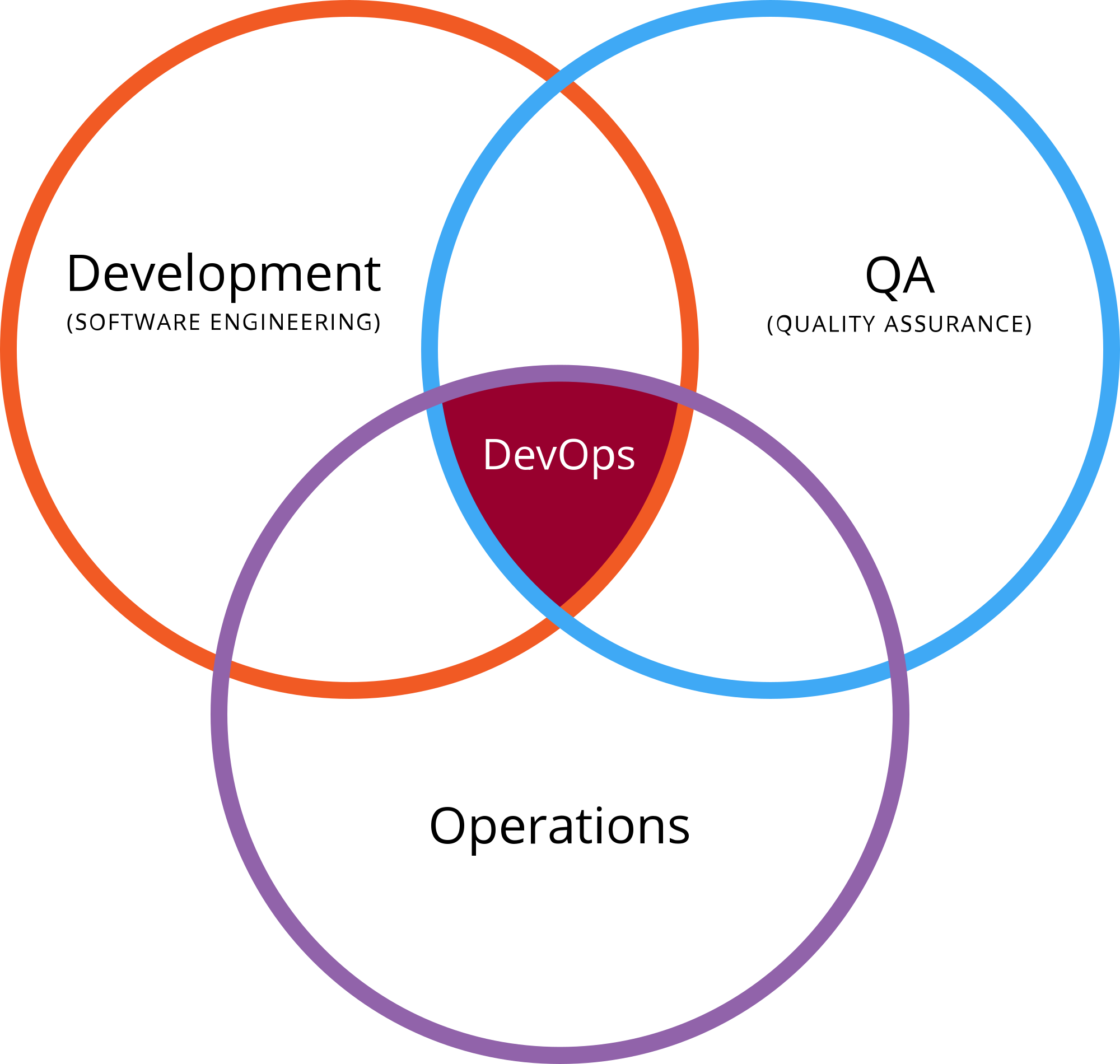Welcome !
What was the first computer software and how was it made :
In a way that depends on first hardware (programmable).If you go with the US claim, then ENIAC programs were classified. One declassified one was published some where by either von Neumann or Knuth. I don't have my reference for that. Might have been 8-queens or sorting.
If you go with the British claim, that the Colossus was semi-programmable, and it was first electronic hardware, then it was classified cryptanalytic software. They produced almost a dozen Colossi (replicated numbers is a strong point).
If you go with Zuse, it will be some German business software.
I think these were all machine language.
Because of the original use of computers was secret, do not trust claims of history. Recently declassified NSA histories of Army Security Agency (ASA) computers and Naval Security Group (NSG) machines may predate many of these claims.

The Software Industry Special Interest Group at the Computer History Museum is dedicated to preserving the history of the software industry, one of the largest and most influential industries in the world today. The industry originated with the entrepreneurial computer software and services companies of the 1950s and 1960s, grew dramatically through the 1970s and 1980s to become a market force rivaling that of the computer hardware companies, and by the 1990s had become the supplier of technical know-how that transformed the way people worked, played and communicated every day of their lives. The SI SIG is working to preserve for future generations information about the companies, people, products, and events that shaped the evolution of this vital industry.

Dennis M. Ritchie, 70, who helped shape the modern digital era by creating software tools that power everything from search engines like Google to smart phones, was found dead on Oct. 12 at his home in Berkeley Heights, N.J. He was the principal designer of the C programming language for computers.
From its beginnings in the 1940s, writing software has evolved into a profession concerned with how best to maximize the quality of software and of how to create it. Quality can refer to how maintainable software is, to its stability, speed, usability, test ability, readability, size, cost, security, and number of flaws or "bugs", as well as to less measurable qualities like elegance, conciseness, and customer satisfaction, among many other attributes. How best to create high quality software is a separate and controversial problem covering software design principles, so-called "best practices" for writing code, as well as broader management issues such as optimal team size, process, how best to deliver software on time and as quickly as possible, work-place "culture," hiring practices, and so forth.
Software:
The software is the information that the computer uses to get the job done. Software needs to be accessed before it can be used. There are many terms used for process of accessing software including running, executing, starting up, opening, and others.
Computer programs allow users to complete tasks. A program can also be referred to as an application and the two words are used interchangeably.
Examples of software programs or applications would be the Operating system (DOS, Windows, UNIX, MacOS and various others), word processor (typing letters), (financial info), (inventory control and address book), Graphic programs, internet browser, Email and many others.
As well any document that you create, graphic you design, sound you compose, file you make, letter you write, email you send or anything that you create on your computer is referred to as software. All software is stored in Files.

Software is stored on a disk, card, tape or one of the dozens of other storage devices available.
There are millions of different pieces of software available for almost every conceivable need. Software is available commercially through stores and mail order and also available on the internet. Software is also available through an Open Source license which allows anyone to use the Open Source software free of charge as long as the license is maintained. If you can't find the application that you need software development companies can custom design software for you.
The largest software companies offer packages of software or suites that include many of the programs that the average person or business needs. Software packages or suites contain programs that work together and share information, making it easier to combine that information in versatile ways. For example when writing a letter you can get the mailing address from an address book, include a letterhead from a graphics program and included a financial chart from a spreadsheet and combine this collection of information in the body of the letter.
When the first modern digital computers appeared in the early 1940s, the instructions to make them operate were wired into the machine. At this time, people working with computers were engineers, mostly electrical engineers. This hardware centric design was not flexible and was quickly replaced with the "stored program architecture" or von Neumann architecture. Thus the first division between "hardware" and "software" began with abstraction being used to deal with the complexity of computing.

Programming languages started to appear in the 1950s and this was also another major step in abstraction. Major languages such as Fortran, ALGOL, and COBOL were released in the late 1950s to deal with scientific, algorithmic, and business problems respectively. E.W. Dijkstra wrote his seminal paper, "Go To Statement Considered Harmful",in 1968 and David Parnas introduced the key concept of modularity and information hiding in 1972 to help programmers deal with the ever increasing complexity of software systems. A software system for managing the hardware called an operating system was also introduced, most notably by Unix in 1969. In 1967, the Simula language introduced the object-oriented programming paradigm.
These advances in software were met with more advances in computer hardware. In the mid 1970s, the microcomputer was introduced, making it economical for hobbyists to obtain a computer and write software for it. This in turn led to the now famous Personal Computer (PC) and Microsoft Windows. The Software Development Life Cycle or SDLC was also starting to appear as a consensus for centralized construction of software in the mid 1980s. The late 1970s and early 1980s saw the introduction of several new Simula-inspired object-oriented programming languages, including Smalltalk, Objective-C, and C++.
Open-source software started to appear in the early 90s in the form of Linux and other software introducing the "bazaar" or decentralized style of constructing software. Then the World Wide Web and the popularization of the Internet hit in the mid 90s, changing the engineering of software once again. Distributed systems gained sway as a way to design systems, and the Java programming language was introduced with its virtual machine as another step in abstraction. Programmers collaborated and wrote the Agile Manifesto, which favored more lightweight processes to create cheaper and more timely software.
The current definition of software engineering is still being debated by practitioners today as they struggle to come up with ways to produce software that is "cheaper, better, faster". Cost reduction has been a primary focus of the IT industry since the 1990s. Total cost of ownership represents the costs of more than just acquisition. It includes things like productivity impediments, upkeep efforts, and resources needed to support infrastructure.

Software can be defined as programmed instructions stored in the memory of stored-program digital computers for execution by the processor. The design for what would have been the first piece of software was written by Ada Lovelace in the 19th century but was never implemented.
Alan Turing is credited with being the first person to come up with a theory for software, which led to the two academic fields of computer science and software engineering. The first generation of software for early stored program digital computers in the late 1940s had its instructions written directly in binary code. Early on, it was very expensive when it was in low quantities, but as it became more popular in the 1980s, prices dropped significantly. It went from being an item that only belonged to the elite to the majority of the population owning one. Software would not be where it is today without Bill Gates and Steve Jobs, two pioneers in the industry that had monumental impacts on the history of software.
Early days of computer software (1946–1979)....
In his manuscript "A Mathematical theory of Communication", Claude Shannon (1916–2001) provided an outline for how binary logic could be implemented to program a computer. Subsequently, the first computer programmers used binary code to instruct computers to perform various tasks. Nevertheless, the process was very arduous. Computer programmers had to enter long strings of binary code to tell the computer what data to store. Computer programmers had to load information onto computers using various tedious mechanisms, including flicking switches or punching holes at predefined positions in cards and loading these purchase cards into a computer. With such methods, if a mistake was made, the whole program might have to be loaded again from the beginning.Early software was often custom written for by particular customers..

1980s:
Before the microcomputer, a successful software program typically sold up to 1,000 units at $50,000-60,000 each. By the mid-1980s, personal computer software sold thousands of copies for
$50–700 each. Companies like Microsoft ...




